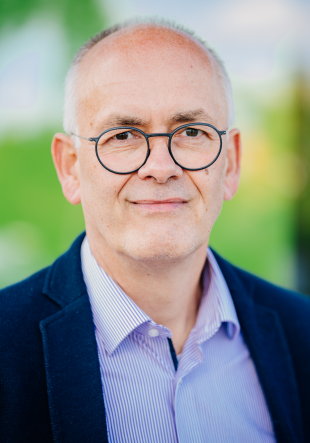NNP - Nanopatterning Δ Nanoanalysis Δ Photonic Materials

The Chair “Nanopatterning, Nanoanalysis, Photonic Materials” analyzes and develops methods enabling the fabrication of nanopatterned solid surfaces. The focus is on universally applicable, low-cost colloid-based processing routes. Modern analytical transmission and scanning electron microscopy techniques are employed, which allow for a morphological, structural and compositional characterization of nanoobjects and interfaces on length scales down to the atomic scale.
Read more on the website of the specialist group.
Goals
With the continuously growing demand for functional nanostructures, interest in cost-effective, precise, and large-area structuring techniques is increasing. Hence, the main objective of the NNP is the development of novel techniques for nanostructuring of solid surfaces and interfaces. The central focus is on processes which are based on the self-organization of colloids or block copolymers, whereby typical feature sizes between 1 µm and less than 10 nm can be achieved. An in-depth understanding of the physical mechanisms during processing and the correlation with material properties is achieved through the application and development of high-resolution (transmission) electron microscopic and spectroscopic methods as well as dedicated modeling and analysis software.
Methodical competence
- Fabrication of nanostructures and functional thin films
- Transmission and scanning electron microscopy
- Energy-dispersive X-ray spectroscopy
- Electron energy-loss spectroscopy
- Methods of nuclear solid state physics (Rutherford backscattering, ...)
- Ion beam techniques
Topics
Nanopatterning
- Self-organized colloidal nanomasks, nanosphere lithography (NSL)
- Thermally and ion beam induced mask deformation
- Template-assisted self-organization of nanoparticles
- Reactive ion etching of surfaces (RIE)
- Plasma-enhanced chemical vapor deposition (PECVD)
- Physical vapor deposition (PVD) of thin films by means of evaporation and sputtering
Nanoanalysis
- Interface, defect and surface analysis of nanostructures and hybride materials using microscopic and spectroscopic methods
Applications
- Semiconductor epitaxy on planar and complex shaped surfaces
- Wetting and dewetting on complex shaped surfaces
- Growth of nanowires
- Biomimetic antireflection surfaces
- Metallic nanocluster assemblies with plasmonic properties

